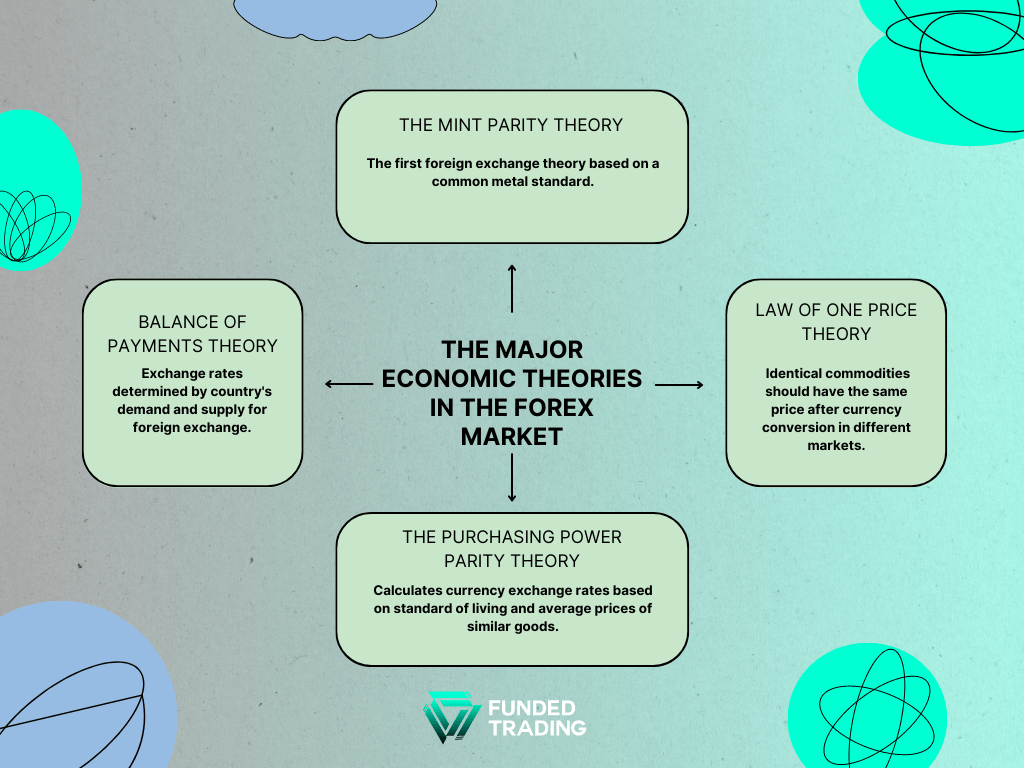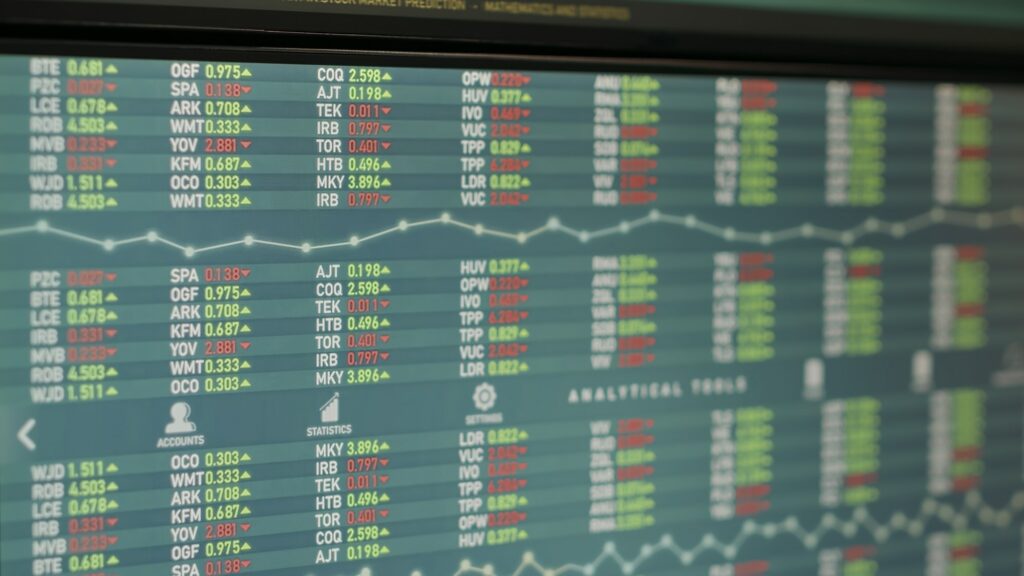Economic Theories
Economic theories in the forex market seek to explain the current trading trends. Numerous additional ideas make an effort to explain and have an impact on the market as well as the activities of traders.
Each theory is predicated on a set of assumptions about the circumstances, connections, and interconnected elements of the economy. Because of these presumptions, economists may more quickly detect cause-and-effect links despite the economy’s complexity.
What is an Economic Theory?
An economic theory is a model used to describe various economic events and to explain how economies work. It is employed to study, forecast, and comprehend economic activity.
Experienced traders in the forex markets are often aware of the economic theories that employ potent analytical tools to model the functioning of the markets, as well as the collection of practitioner ideas that outline trading strategies that may generate significant profits.

The four economic theories that are present in the forex market are explained below.
Balance of Payments Theory
The balance of payments theory states that exchange rates are determined by the balance of payments, which refers to the country’s demand and supply positions for foreign exchange.
Based on the theory, several components of a country’s balance of payments impact the forces of supply and demand. The idea holds that a negative balance of payments results in a decline or depreciation in the exchange rate. In contrast, a positive balance of payments increases the exchange reserves and increases the value of the domestic currency relative to foreign currencies.
The Purchasing Power Parity Theory
Purchasing power parities theory is used to calculate currency exchange rates when comparing the standard of living and wealth of various countries around the world. It is founded on the law of one price (LoOP), but it uses the average price of similar goods.
According to this theory, the equality of the purchasing power of two inconvertible paper currencies determines the equilibrium rate of exchange. Finding the lowest pricing for goods or services around the world is made easier with PPP. Also, it enables the use of exchange rates to compare the purchasing power of various currencies at equilibrium when the cost of the product basket is the same in all two countries.
Law of One Price (LoOP) Theory
The Law of One Price (LoOP) is an economic theory stating that the price of identical commodities in different markets must be the same after currency conversion. Most securities traded on the markets are covered by the legislation. The law of one price does not, however, always apply in real life. The rule won’t apply, for example, if the exchange of goods is hampered by trade obstacles or transaction fees.
The buying power parity principle is based on LoOP. In some cases, the claim would cost the same amount. For example, the number of euros needed to buy USD and then use the money to buy a basket of items will be the same if those are used to buy the basket directly.
The Mint Parity Theory
The mint parity theory is the first foreign exchange theory. This theory applied to nations that shared a common metal standard. Under the gold standard, the weight of gold of a certain purity contained in a unit of money determined its value.
The mint parity idea brought attention to two crucial facts. First off, the equilibrium rate of exchange and the actual rate of exchange can diverge. Second, the gold standard has established upper and lower bounds prohibiting exchange rate fluctuations. For example, if the price of gold increases, it may lead to an increase in the value of currencies that are tied to gold, such as the Australian dollar. On the other hand, a decrease in the price of gold may lead to a decrease in the value of the same currencies.
Conclusion
An economic theory is like a model that helps us understand how economies function and explain different economic phenomena. It is used to study, predict, and interpret economic activities, particularly in high-stakes environments like the forex markets. Experienced traders, especially those operating within proprietary trading firms (prop firms), often rely on economic theories to frame their analysis and simulate market behavior more precisely.
Each theory attempts to make sense of the many complex buying and selling decisions that influence price movement in the forex markets every day. For prop trading, where traders use firm capital to execute strategies, a solid grasp of economic theory becomes even more crucial for risk management, macroeconomic forecasting, and crafting data-driven trading models.
While having knowledge of these economic theories is advantageous, it’s important to recognize that no single theory can fully capture the dynamics of global currency markets. Trends shift rapidly, and a theory once dominant may quickly lose its predictive power. That’s why successful prop traders blend multiple theories with real-time analytics, ensuring a flexible and adaptive approach to market conditions.






